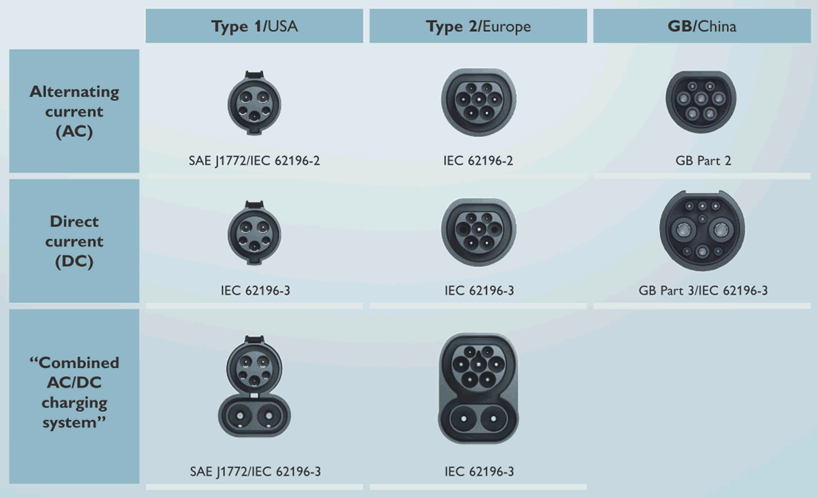Electrical mobility is one of the growth markets and a decisive factor when integrating energy systems based on renewable energy. Electric vehicles are continuing to gain in importance; a development which is reflected in the ambitious targets many governments have set to curb CO2 emissions. While not a mainstream mode of propulsion yet, the development of a widespread charging infrastructure in conjunction with renewable energy will pave the way for a mobile future.
Currently, the majority of the electric vehicles that are using conductive coupling to supply electricity in the U. S., settle on the SAE J1772-2001 (Type 1) as the charging interface of choice. Whereas in Europe, the European Automobile Manufacturers’ Association (ACEA) has decided to use the VDE-AR-E 2623-2-2 (Type 2) connector from the range of IEC_62196 plug types for conductive charging of electric vehicles as the Type 1 connector does not provide for three-phase charging.
Various charging system geometries have become established at an international level. On the one hand, they differ in the international markets comprising the United States, Europe, and China. On the other hand, the pin connector patterns are also dependent on the charging method. Therefore, for example, when charging with alternating current (AC), the charging plug geometry is different than that used for charging with direct current (DC). In addition, there is a further geometric version whose vehicle inlet facilitates charging with both AC and DC. The following matrix provides an overview of the various vehicle inlets. They each bear a caption featuring their descriptive standard.
In my next post, I will discuss a little on the charging modes available in the market.


